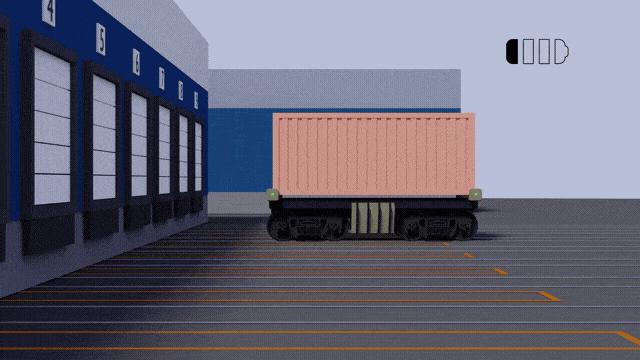Genesee and Wyoming (G&W) railroad, the parent of the Heart of Georgia Railroad and Georgia Central Railway, and their partner, Parallel Systems Inc., are attempting to begin testing fully autonomous train cars. Their experimental, self-propelled container cars pose many problems and, if successful, will threaten many union-protected jobs.
SMART-TD shared our concerns at their first hearing and will explain our position to the FRA by filing a public comment. We encourage you to follow this link and submit a comment of your own about the attempt to run fully automated containers.
The comments are due April 1 and are open to the public.
WHAT ARE AUTOMATED CONTAINERS?
Parallel Systems, founded by former SpaceX personnel, has a prototype of a self-driving container car, which SMART-TD and our partners have seen in action. The cars don’t have couplers. Instead, each has a battery, motors and radio-connected computer that allows individual freight cars to move wherever they need to go. Their goal is to eventually eliminate engines, yards and conductors entirely.
Strong resistance at the first hearing
Our union’s testimony left little doubt that this concept is nowhere near ready for a real-world setting. SMART-TD Alternate National Legislative Director Jared Cassity’s testimony opened many eyes and landed with the members of the FRA technical committee. Even representatives of G&W and Parallel Systems began to see the error of their ways.
ANLD Cassity pointed out multiple examples where these crewless vehicles fail to meet federal regulations, which enforce well-established safety and industry standards. If Parallel expected a warm reception for their new shiny thing, they were sadly mistaken.
Cassity made it very clear that this project and testing it on live tracks was detrimental to the safety of every rail professional in the area and drastically compounds risk to the community.
G&W, FRA play a waiting game at hearing
This hearing, held in a community center in the Atlanta area, was attended by SMART-TD, the AFL-CIO’s Transportation Trades Department (TTD), and other rail unions. While scheduled to run until 5 p.m., both G&W and FRA representatives thanked everyone and told labor we got an early quit. As long as the meeting was technically open, and the Zoom “recording” button was still flashing, we weren’t going anywhere. The room emptied over several minutes. SMART-TD, the TTD and other labor groups remained. After many silent minutes, the CEO of G&W began reading a rebuttal to Cassity and the other unions’ objections.
Clearly wounded, G&W went on record claiming that the new technology wasn’t as bad as our facts made it out to be.
It would have been funny if it wasn’t so sad.
Get ready for a fight
We also learned that the FRA has already scheduled a meeting to announce its decision on April 18th. SMART-TD has a couple of problems with this announcement. Written public comments are not due until the close of business April 1, this seems like a lightning quick turnaround to announce a decision.
The public comment period for 2PC regulations ended in December 2022, and we have not been given a final decision on that matter in March 2024! Important issues should take time to decide.

Autonomous freight cars would upend everything we know about the railroad industry, but the FRA is going to make a decision a little more than two weeks after the deadline for public comment. Has the outcome of this hearing and public-comment period already been determined through a backroom deal? Not on our watch.
The FRA has worked closely with our union on almost every topic involving rail since 2021. Why did we find out about this highly important meeting, announcing a potentially monumental shift in our industry, only by lurking in a public meeting after they told us it was time to leave? That is not how the agency has operated since President Biden appointed Administrator Amit Bose.
SMART-TD is on alert to this new threat — follow this link and tell the FRA your opinion of G&W’s intention to run fully automated container cars on our rails.